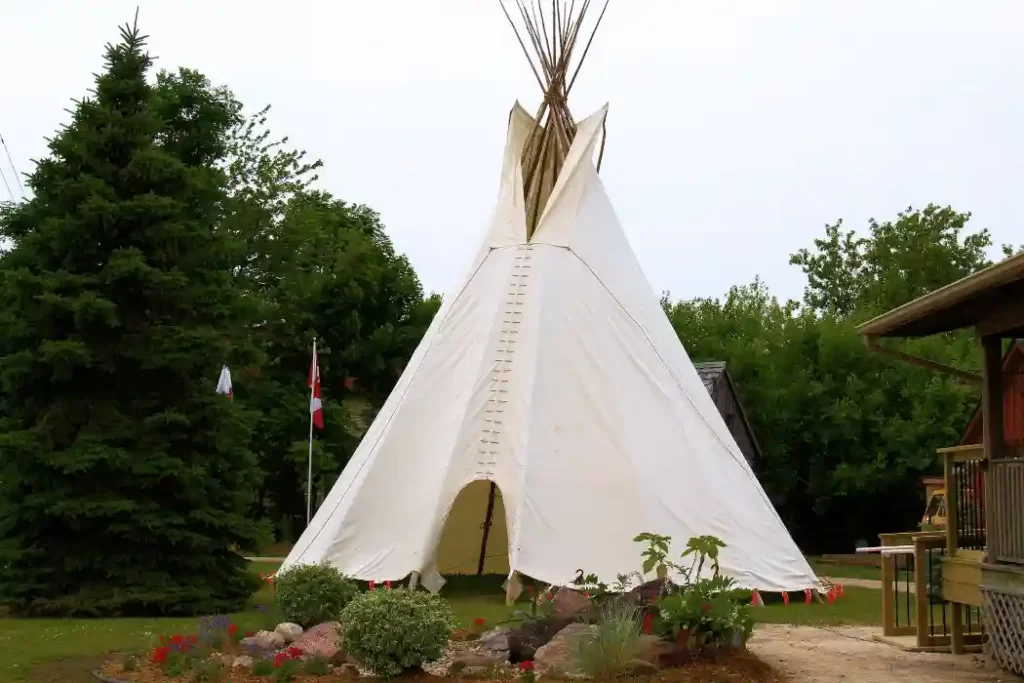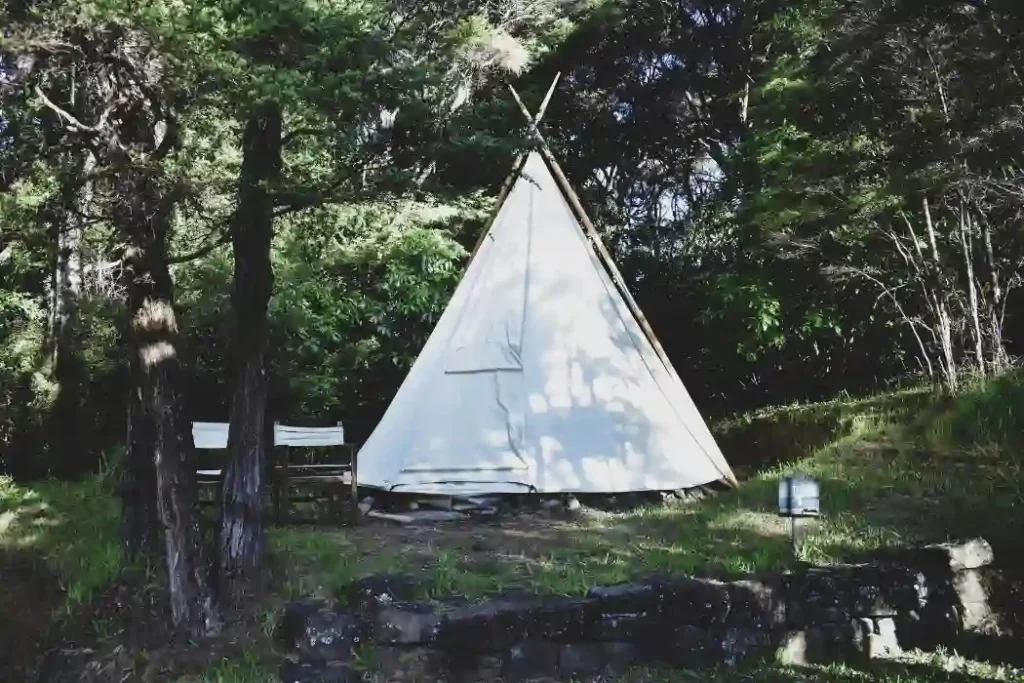In a world filled with brick and mortar, there’s something undeniably captivating about the idea of living in a teepee. The word “teepee” conjures images of a simpler, more connected life, one in harmony with nature. But what exactly are these permanent teepees that are capturing the imaginations of so many? Exploring the topic of permanent teepees serves as a valuable source of knowledge for those intrigued by the timeless allure of these unique dwellings. In this blog post, we’re going to dive deep into the allure of permanent teepees, exploring their history, architecture, and the unique experience of living in one.
What are Permanent Teepees?
Teepees, also known as tipis, are conical tents traditionally made from wooden poles and animal hides. The term “permanent teepee” refers to modern adaptations of these traditional structures that are designed for year-round living. These are not just tents; they are fully functional homes that offer a distinctive living experience.
The Enduring Appeal of Teepees
Why are teepees still captivating our hearts and minds in this digital age? The appeal lies in their connection to nature, their unique architectural design, and the promise of a more sustainable and minimalistic lifestyle. In this blog post, we’ll uncover what makes teepees so irresistible.
A Brief History of Teepees
Before we explore the modern aspects of permanent teepees, it’s essential to understand their historical roots. We’ll take a journey through time to explore how teepees were used by different cultures, particularly by Native Americans and other indigenous groups. Understanding their history will shed light on their enduring significance.

The Architecture of Teepees
Structure and Design
The classic teepee design consists of a conical frame formed by wooden poles, covered with durable materials such as canvas or modern fabrics. The beauty of this structure lies in its simplicity, as well as its stability in various weather conditions. We’ll delve into the specifics of how teepees are constructed and the principles that make them such sturdy dwellings.
Materials Used
What goes into building a teepee? We’ll explore the materials traditionally used in teepee construction and how modern innovations have brought new, more sustainable options into the mix. The choice of materials plays a significant role in the longevity and eco-friendliness of these dwellings.
Sustainable Aspects
Teepees are often associated with sustainable living. We’ll discuss how their design, materials, and lifestyle choices contribute to a smaller ecological footprint. Understanding the eco-friendly aspects of teepees is crucial in an era where environmental consciousness is paramount.
Modern Innovations
The art of teepee construction has evolved over time. We’ll shed light on the modern innovations that have made permanent teepees more comfortable and efficient for year-round living. From insulation to ventilation, these innovations have transformed teepees into cozy homes.
Living in a Teepee: The Experience
Pros and Cons
Is living in a teepee all it’s cracked up to be? We’ll provide a balanced view of the pros and cons, from the sense of freedom and closeness to nature to the potential challenges of limited space and adapting to a unique way of life.
Teepee Décor and Interior Design
Creating a beautiful and functional living space inside a teepee is an art in itself. We’ll explore the interior design possibilities, offering inspiration for those considering this alternative lifestyle. Think cozy fireplaces, rustic furniture, and creative storage solutions.
Lifestyle Choices
Living in a teepee often goes hand in hand with a shift towards a more minimalist and nature-centered lifestyle. We’ll discuss the lifestyle choices that often accompany teepee living, such as reduced consumption, sustainable practices, and a stronger connection with the outdoors.
Community Living in Teepee Villages
While some choose to live in teepees on their own, others opt for teepee communities. We’ll take a look at the rise of teepee villages, where like-minded individuals come together to share the teepee experience. What does community living in a teepee village entail, and how does it foster a sense of togetherness?
Teepees Around the World
Native American Teepees
The iconic Native American teepee is an essential part of American history. We’ll explore the cultural significance of these teepees, their role in indigenous communities, and how they continue to influence modern teepee living.
Mongolian Yurts
While teepees are synonymous with Native American culture, Mongolian yurts offer a different perspective on conical dwellings. We’ll compare and contrast these two structures, highlighting their unique features and cultural backgrounds.
Modern Teepee Homes
Permanent teepees aren’t limited to North America or Asia. We’ll take a global tour to discover modern teepee homes in various parts of the world. From Europe to Africa, these dwellings have found a place in diverse landscapes.
Glamping in Teepees
Teepees have also found their way into the world of glamping, offering a luxurious and adventurous escape for travelers. We’ll explore the glamping trend and how teepees play a significant role in providing unique, nature-immersed accommodations.
The Environmental Aspect
Eco-Friendly Living
Sustainability is a buzzword of our times, and teepee living aligns perfectly with this ethos. We’ll discuss how teepees encourage eco-friendly living through reduced energy consumption, smaller ecological footprints, and a deeper connection to the natural world.
Minimalistic Living
Minimalism is not just a design aesthetic; it’s a way of life. Teepees embody the principles of minimalistic living, focusing on essentials and eschewing excessive materialism. We’ll delve into how teepee living promotes minimalism.
Teepees and Sustainability
Teepees are more than just eco-friendly; they are a symbol of sustainability. We’ll explore how these structures are designed to stand the test of time, and how their low impact on the environment makes them a sustainable housing option.
Energy Efficiency
Energy efficiency is a critical aspect of teepee living. From heating methods to lighting choices, we’ll discuss how teepees are designed to maximize energy efficiency, helping residents reduce their environmental footprint.
Building Your Own Teepee
DIY vs. Professional Construction
Interested in making a teepee your home? We’ll weigh the pros and cons of building a teepee yourself versus hiring professionals. This section will provide insights into the level of commitment and skill required for each approach.
Cost Considerations
Building a permanent teepee involves various costs, from materials to labor. We’ll break down the expenses involved and offer tips for budget-conscious individuals who aspire to live in a teepee.
Legal and Zoning Issues
Before you embark on your teepee-living journey, you need to navigate legal and zoning considerations. We’ll provide guidance on what to watch out for and how to ensure your teepee complies with local regulations.
Tips for a Successful Project
Embarking on a teepee-living adventure is exciting but comes with its challenges. We’ll offer practical tips for a successful project, from site selection to maintenance, ensuring your teepee is a cozy and sustainable home.
Conclusion
The allure of permanent teepees represents a timeless dream that continues to captivate our hearts and minds. These unique dwellings symbolize a return to a simpler, more sustainable way of life, embracing minimalism, and connecting with nature in a world that often feels disconnected. The architectural marvel of teepees, the eco-friendly living they offer, and the sense of community they foster are all part of what makes them so enchanting.


